Age of Blight – Kristine Ong Muslim
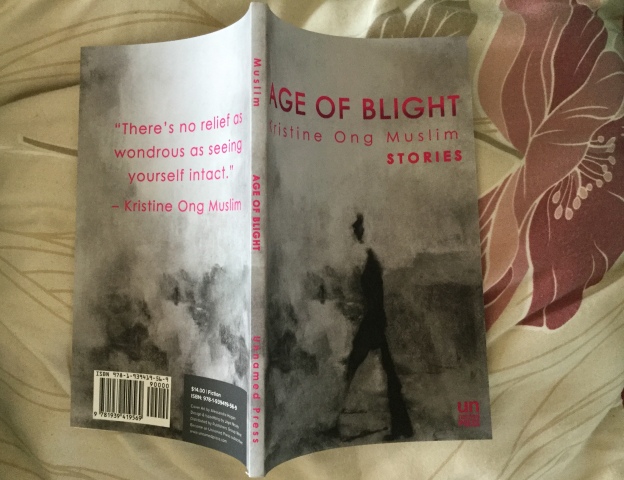
THE UNNAMED PRESS 2016
My previous reviews of this author HERE
When I read this book, my thoughts will appear in the comment stream below…

www.nemonymous.com
Des Lewis - GESTALT REAL-TIME BOOK REVIEWS
A FEARLESS FAITH IN FICTION — THE PASSION OF THE READING MOMENT CRYSTALLISED — Empirical literary critiques from 2008 as based on purchased books.


 I learnt a lot about this in such a deceptively short story’s long journey as they raced the pigeons in North Scotland where the father lives. The outcome of the marriage and its implications will not be easily forgotten by anyone who reads this story, and I cannot tell you about it here, in case you take off the wrong ring when it comes home to you. (I was further emotionally intrigued because of my earlier encounter with a fiction in which homing pigeon lore became significant for me here, such a memory just now giving me a bonus prize of chance enhancement to the Violet Eye.)
I learnt a lot about this in such a deceptively short story’s long journey as they raced the pigeons in North Scotland where the father lives. The outcome of the marriage and its implications will not be easily forgotten by anyone who reads this story, and I cannot tell you about it here, in case you take off the wrong ring when it comes home to you. (I was further emotionally intrigued because of my earlier encounter with a fiction in which homing pigeon lore became significant for me here, such a memory just now giving me a bonus prize of chance enhancement to the Violet Eye.) 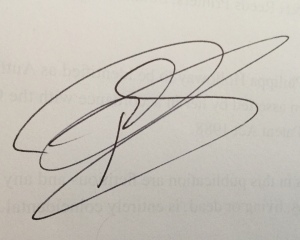

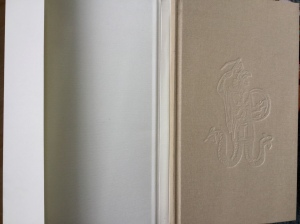
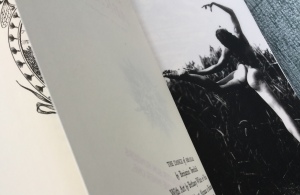
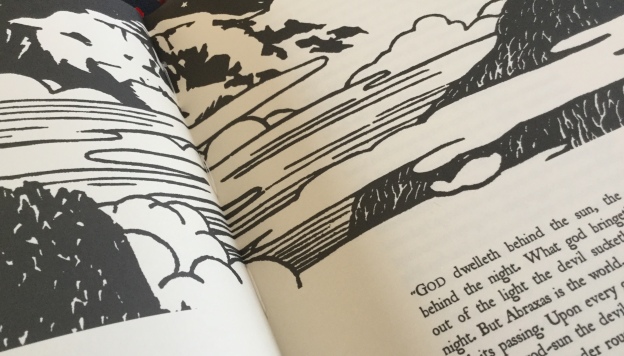
A NOTE ON THE PLACES IN THIS BOOK
“Our lives, as well as those of our ancestors and descendants, are elaborate mythologies that intertwine…”
A lighthouse on an island, among other places with names, at the window of which regularly appears a man. (Cf my review of ‘The Light of Adria’ inside a book called INNER EUROPE that I reviewed in the last few days…) And if that man is meant to be me, I feel slightly scolded by the tone of this preface!
By the way, if a dead human body is found after eleven years, is it surprising that it hasn’t aged? I now turn to the book proper, with an initially jaundiced eye. On further thought, perhaps the body connects with the KOM quote on the back cover? The Age of Light, not Blight?
LEVIATHAN
Lighter THAN what? Air or deliberate levitation?
This is a story of news management, explaining away the botched recovery of this rare mythic beast, not rare, but tantamount to impossible. Botched despite your trying to instal artificial gills into the now dead specimen of myth. News management read about here on the very day that two Russian mugshots come to life as grizzled tourists of an English cathedral city. The ‘Black Static’ photo shows Nemonymous, there, a few years ago, alongside that impossibly tall spire. “Behold the beast.”
“—honed (sic) in on the low , steady humming only it could hear.”
“‘I’m only going to be around another ten years. What I’d like to do, then, is leave a great big mess behind.’ If that was his aim he did a perfect job. […] …as he hurtled toward his great all-American dream and the pageantry that went with it,…”
For this book first published in 2016 and this story first published in 2014, I wonder what the word ‘pageantry’ was a euphemism for? Talking of cacophemisms, though, in the 1990s, some of my published stories featured “the all-American thumper-monster.”
This is also a powerfully disturbing account of the ‘nurture and nature’ series of experiments using baby monkeys as conducted by Harry F. Harlow, featuring fabricated cloth-mothers and wire-mothers. As narrated by one of the wire mothers!
I am only going to be around another ten years, too.
“You should know that there are no speed bumps in zero gravity.”
A touching and disturbing and detailed narration by LAIKA about the trip in a Russian satellite and the backstory in a car, an event that is well within my living memory if I knew about it at all at the age of 9. Pavlov’s Dog nature and nurture in this first section headed ANIMALS. Towards the monumental gestalt of all of us, including our other experimented-upon friend called Gaia, I guess.
Recommended additional reading: LOOKING FOR LAIKA by Laura Mauro that I reviewed here.
NO LITTLE BOBOS
“Anyone who does not look and talk like us is the enemy.”
Experiments, now with strict time limits, on children, regulated experiments regarding how aggression is acquired, with use of the eponymous Body Odour dolls that mean there are no dolls except a sense of pungent bodyself, just the “me” waiting to emerge from the amorphousness of a child’s mind. Anne Fender’s regulated breast milk, as an eventual mutuality of competitive existence?
From the wire mother of The Wire Mother, the bonsai wire-training in the previous story, and the wire-enclosed playground here, we now have meaning in the changelings, foundlings and lostlings of the “Happens all the time” syndrome of our own times.
“, a dream became its own interpretation.”
A quote for this book’s gestalt? A curse purely to break another curse. A form of death for those already dead. Marty’s way of dealing with being made self-conscious of his autonomous hands. An autosuggestion from his Grampa Des. Puppet wires can reach everywhere?
“…we had no choice but to endure the treatment, because that was how the world worked.”
…the same with this book, an acceptance where it takes you, sometimes deadpan on its part, sometime on your part as reader. Taking some things for granted. Here a group of older kids, a group like Blyton’s, maybe, one of them you, or me, more like, an acceptance of order, a pecking order of bullying or befriendment, and by some form of narrative radiating from or to each of us, the knowledge that someone who might have been human becomes an indescribable monster. Becoming it by stages. Best to get it bang out of order, if so. The sooner the better is best. I know better, I guess.
“What’s dead stays dead.”
We now have Dominic, a six year old boy who one day transcended this book’s autonomous hands and planted his cut fingernails in the ground and later told his too busy “Mother” of an “Other” gradually growing from them. Until this Other became another him. Chewed down to the cuticle self. Leaving a Doppelgänger or Drogulus called Dominic. All of us hard ungulates at heart made to soften our horns by recognising what this powerful fable tells us. Brings deadpan to new levels.
THERE’S NO RELIEF AS WONDROUS AS SEEING YOURSELF INTACT
“This just isn’t fair. Nothing is.”
Unlike sudden Death, the Empty leaves the option of seeing its happening gradually like a gestalt real-time review of body depletion and self. Does such a frightful memory stay behind, I wonder? Proust’s narrator was once a boy of school age. Did he have other schoolmates, though, to share and thus diminish such null-immortalis of his retrocausal memory from an Empty teacup with not even a crumb of cake to choke on. As in the earlier NOTES ON PLACES, the dead body is still alive with a series of selves each watching the previous one growing bigger into the past. But who the Head Master? So many interpretations, I think this otherwise short text is the only way to fathom death and provide as painless a catharsis of it as possible. Omissions or blank stories alike towards an optimum economy of truth.
“…about the black market that brimmed with forgeries of docile wives to replace nagging ones, about the new religion worshipping a radioactive potato…”
A Dominic/Dominic changeover scenario involving yourself as me and a pet, pets being necessary in this era “to quench our appetite to maim other people.”
People naturally hate each other, so we need tools to obviate that fact! My own widespreading method or tool is the public act of gestalt real-time reviewing those books of literature with healing hyper-imagination. A year’s helpful supply of casseroles, notwithstanding.
“You won’t be an undead dead forever,” I added. “The world is going to end soon.”
As well as fitting the gestalt of this book and of our Age of Blight and Abrexit, this story serendipitously (if that is the right word) fits with the section of the Dance of Abraxas I happened to read about half an hour ago here. In fact, Zombie Sister may well be the obverse side of that other book by the random chance of being concurrently reviewed, as the sister here comes back from the dead amid a world’s eschatology of attrition. A deadpan account of acceptance as this ‘dead’ sister watched (if not saw) the children in the street still playing and “who rolled the glittery red things…” These children are blissfully unaware of the encroaching Empty that faces us all. But this may turn out not to be relevant to the Dance of Abraxas at all! Blight has Light and Blind in co-assonance?
“Blind dead is the worst kind of dead.”
“Think about all our stories and those of the ones before us. This terrible unfolding does not always see a blunt object gain shape. Sometimes, it distorts the object and the landscape that conspires to retain its shape.”
That seems paradoxically an exact rendition of my feeling when I read the type of books I read, especially this book, and this story, a story that exactly expresses this with its narration by a girl once brought up as in ROOM (a film I was socially ‘forced’ to watch a couple of days ago and now given further meaning), brought up thus because of her bodily tentacle at birth, a seemingly common feature in our far-future when this our age of b(light) was still impending by viscerally feral means, that Outerbridge of our being. This story’s eponymous oxymoron. This book’s curse to break another curse?
DAY OF THE BUILDERS
“What once were trees became stunted wooden figures bending toward the direction of the crater, as if they ended up worshipping whatever it was that had killed most of them.”
Transcending today this substantive and intricate Swiftian fable — first published in Spring 2015 overtly about what we have done to nature and Gaia — is a perceived message about Brexit and Trump, the Builders story being part of these inexplicable phenomena, since brought upon us by oxymorons of belief and diehard absurd faiths and polarised media furies, and by which means many of us have managed to summon into being such a far fetched future now being lived through. Just read this story again in detail and see if you agree with this accretive interpretation. The text seems uncannily to point in this direction of fabulous moral about our own times since it was written.
“There may be no quarantine tank, no Great Beast. Nothing is there but a bunch of guys protecting their interests by making it appear that they were keeping the world safe from the unkillable Great Beast.”
Unkillable, so far, I say. Here, an extension of the fable’s scenario in the previous work, involving fake news and an electric chain-mail fence instead of a wall, protecting the perceived lavender fields.
The intricate interconnecting drainage/ cyborg contraption, with the euphemism ‘quarantine’ attached, seems to have chance mutual synergy with my own version as an overt cacophemism in a 1991 published prose poem reproduced here.
“You promised me that nobody can count the grains of sand on the beach.”
“We could not count them, but we siphoned and used them up.”
HISTORY OF THE WORLD
“, if he is the type of person who believes that hope can change what is otherwise a calculated turn of events.”
Two relatively short pieces making a finely tuned coda to this book. It makes me feel that all the siphoned beaches I have been photographing scrolling endlessly down here over the last few years culminate in this most important moment of fabulous literature. The hope in my soul, too, fighting against life’s retrocausation. In ending, I must mention the drawings at the head of each piece. So important, too. This book also is incredibly more than its mere Gestalt.
end